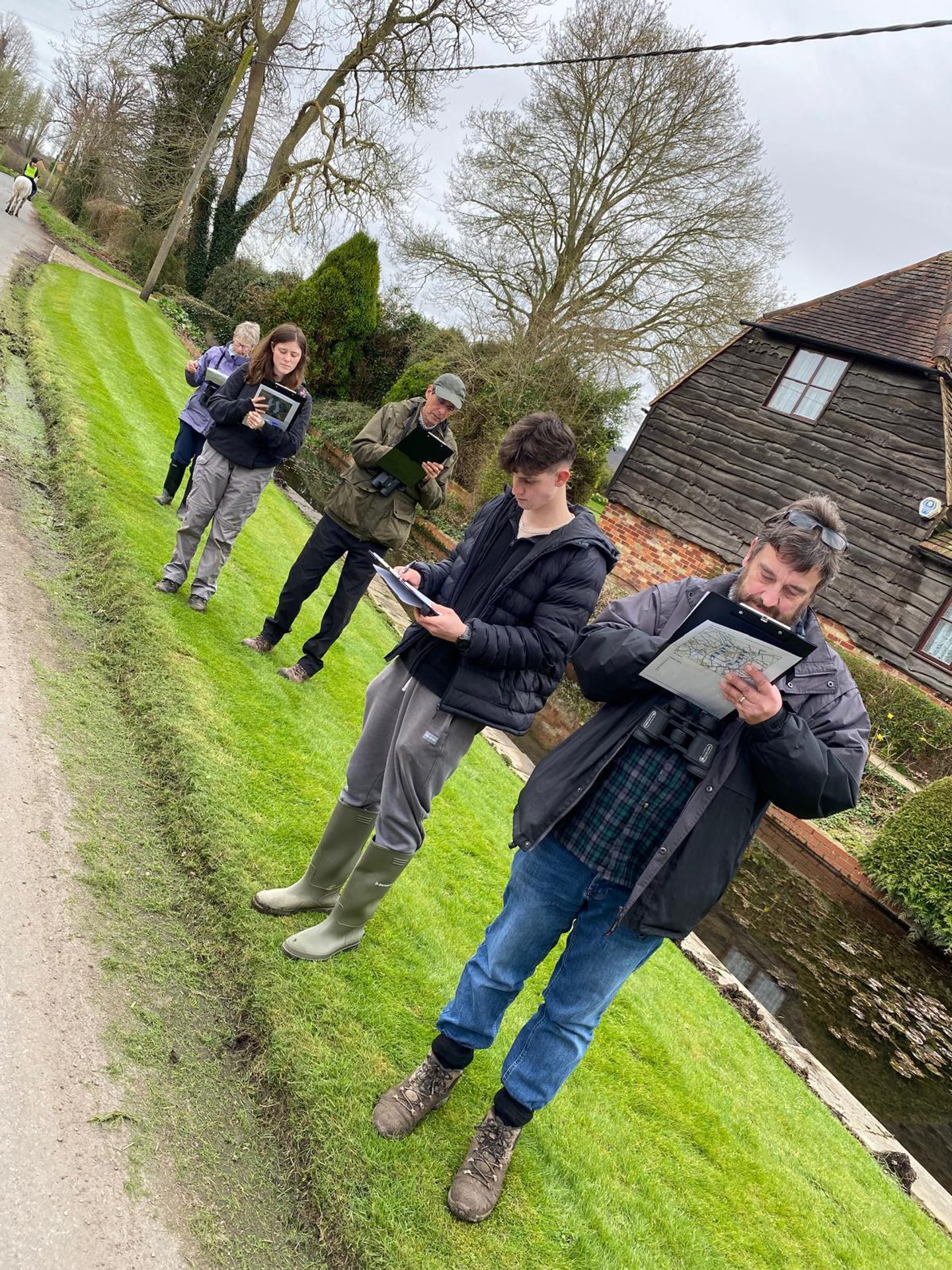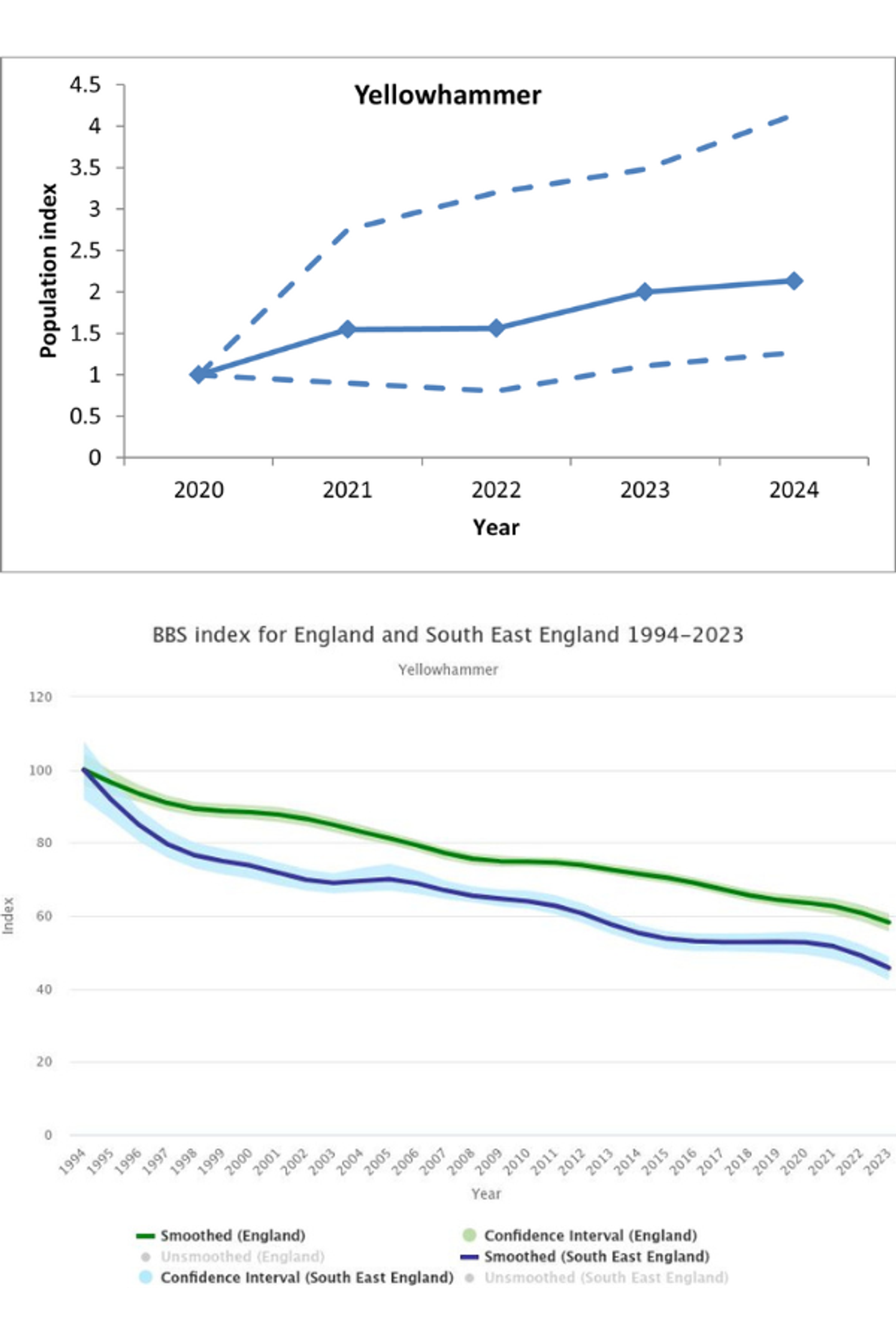Lead organisation
Partner organisations
Steering Group Members
- British Trust for Ornithology
- Butterfly Conservation
- Plantlife
- UK Centre for Ecology and Hydrology
- Berkshire, Buckinghamshire, and Oxfordshire Wildlife Trust
- Buckinghamshire and Milton Keynes Environmental Records Centre
- Joint Nature Conservation Committee
Funding Partners
Evaluators
Farmers
Project description
Tracking the Impact is an award-winning model for monitoring nature at scale, from the heart of the Chilterns. It's a bold and collaborative citizen science project working across the central Chilterns and Chess Valley. Designed to set a clear ecological baseline and monitor long-term changes in birds, butterflies, and plants, this innovative programme is helping us understand how the chalk landscape is responding to conservation efforts—and how we can do more, together.
Now in its sixth year and supported by more than 275 trained volunteers, the project is gathering robust, systematic data across 72 randomly selected 1km squares—creating one of the most comprehensive landscape-scale monitoring programmes of its kind. Volunteers carry out surveys to national standards for the Breeding Bird Survey, Wider Countryside Butterfly Survey, and the National Plant Monitoring Scheme, generating more than 20,000 species records to date. Early results show powerful insights—such as a 40% rise in Yellowhammer numbers locally, a red-listed farmland bird that’s declining nationally.
Tracking the Impact is more than data collection—it’s a grassroots movement. Volunteers are trained, supported, and inspired to become long-term stewards of their landscapes, with opportunities to take part in additional citizen science projects on hedgehogs, amphibians, earthworms, and even the health of the River Chess chalk stream. The project is open, inclusive, and growing—connecting people to place and purpose.
In summary, since 2020:
- 166/222 squares have been surveyed (75%) coverage
- 1,404 visits have been made
- 504 species have been recorded
- 20,341 records have been submitted
Project location
Covering around 30% of the Chilterns National Landscape, this work provides a vital evidence base for farmers, land managers, conservation organisations and local authorities involved in the Central and Chess Valley Farmer Clusters. It informs targeted habitat creation and restoration, shaping real action on the ground.
Contribution to Big Chalk
Tracking the Impact is a powerful expression of the Big Chalk ethos: partnership-led, community-powered, and focused on long-term recovery of chalk and limestone landscapes. It tracks the health of iconic chalk species—like the Adonis blue, Marsh tit, Horseshoe vetch, and Yellow wort—providing a living measure of how our landscapes are faring and where we need to go further, faster.
This model of landscape-scale citizen science could be replicated across other Big Chalk areas, creating a unified monitoring network that not only informs change, but inspires it. By grounding big ambitions in rigorous local data and community action, Tracking the Impact is showing how we can restore nature, together—and prove it.



Do you have a project that could strengthen the future of southern England’s iconic chalk and limestone landscapes?
The Big Chalk programme brings together a dynamic suite of partner-led projects, each unique in its focus, area, and partnerships but sharing a commitment to our collective vision.
If your project contributes to the Big Chalk mission, we invite you to register it as a Big Chalk Project. Registered projects gain access to networking, shared learning, and best practice—alongside the Big Chalk brand, boosting your profile and connecting you to a powerful, growing network of partners.
Together, these projects form a united effort to secure the future of southern England’s chalk and limestone landscapes, making a lasting impact for nature and communities.
